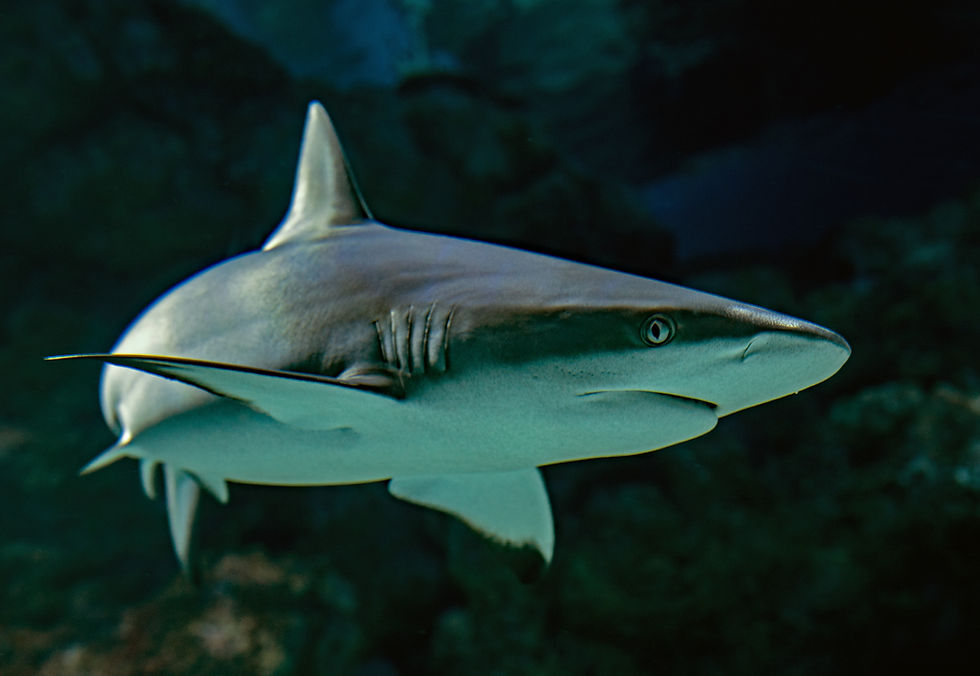
The movie “Jaws”, directed by Steven Spielberg, was a trend-setting film which had significant impact on people for its time. Of course, for decades, people knew how dangerous sharks were, generally, but this movie certainly revolutionized our perception of these fascinating creatures and realized the power of sharks. So much so that, in many places, people even stopped going to beaches!
Sharks come in many sizes--the whale shark, of whom we shall speak shortly, is a slow moving, yet largest known shark and more so, the largest living non-mammalian vertebrate. Before we get into details of the whale shark, let’s take a moment to learn about sharks in general.

Sharks: More Than Just a Set of Sharp Teeth
Sharks are indeed extremely ancient creatures. The first shark-like creatures appeared in seas around 400 million years ago. Therefore, they were chomping prey in the earth’s oceans long before the dinosaurs thundered on earth. Dinosaurs died out about 65 million years ago, but sharks are still terrorizing our oceans today. Scientists believe that the ancestor of modern sharks was a small leaf-shaped fish that had no eyes, fins, or bones. Over thousands of years, these fish evolved into the two main groups that we know today: bony fish (Osteichthyes) and cartilaginous fish (Chondrichthyes). The latter group harbors sharks, skates, rays, and chimaera. Did you know that there are more than 400 species of extant sharks today?
Let’s Meet the Whale Shark
Reaching to about 62 feet (18.8m) long, a whale shark is truly of gigantic proportion. Its average weight is about 50,000 lbs (22, 680 Kgs). The whale shark gets its name because of its sheer size. In comparison, the smallest shark is the dwarf lantern shark, barely 6 inches (15 cm) long, practically fitting into the palm of our hand! The Great White shark falls between the two extreme sizes. It is around 11-13 feet (3.4-3.9m) long but can grow up to 23 feet (7m).
Believe it or not, the main diet of a whale shark is plankton, the microscopic plants rich in protein. In addition, they also scoop up humongous amounts of tiny fish as well. Whale sharks are considered filter feeders similar to baleen whales. Filter feeders eat by straining suspended matter and food particles in water, then passing the water over a specialized filtering structure in their mouth. These huge sharks have 300 rows of small teeth. Interestingly, while all sharks have their mouths on the underside, whale sharks have their mouth in the front. In spite of their menacing features, these creatures haven’t been found to attack humans.

Kids can learn more fun animal and Earth facts with our products!
Electroreception
Sharks are well equipped for hunting, particularly with a special sense called electroreception. Majority of creatures which live in water have electroreception capability. On the other hand, land dwelling species, including us, do not need such ability, so we do not have this sense well developed. But wait! What is electroreception?
Simply put, electroreception means a species’ ability to detect electrical signals emitted by other species, gather information and from the data collected, find out about them. For instance, they can find out how far the other species is, if it is moving or still, and even the direction in which it is moving. Water dwelling creatures such as whale sharks, sharks, whales, chimaeras, skates, rays, dolphins, porpoises, and many others use this ability while hunting, avoiding predators, and communicating with each other. This ability was an evolutionary response for water critters to have some advantage in such places like deep water darkness, murky, muddy ocean caves, especially at night.
Whale sharks normally swim large distances in search of food on the surface of the water. However, a recent scientific study has shown that they dive as deep as 6,200 feet (1,800m) (6,000 Feet Under: Whale Sharks' Deepest Dives Detected | Live Science)! At 490 feet (150m) visibility in water is extremely poor. Hence, the great whale shark depends on its extraordinary sense of electroreception to avoid obstacles and find food.
Electroreceptors are found in the head of a shark as shown in the figure below. The Great White sharks, for example, are known to react to charges of one mullionth of a volt in water! The electroreceptors, known as ampullae of Lorenzini, are jelly-filled tubes that open on the surface of sharks' skin. Inside, each tube ends in a bulb known as the ampulla. Hundreds of these tubes are located under the skin of a shark’s head. The jelly in the tube is highly conductive, which allows the electrical potential at the pore opening to be transferred to the ampulla at the base of the tube. Voltage differences across the membrane lining each ampulla then cause nerves to be activated, sending signals to the brain. Awesome, indeed!

Want to learn more about the oceans and help save the ocean animals? Shop our products below! 100% of our annual net profits go back to schools and wildlife organizations.
You can also support our mission by donating any amount!
Comments